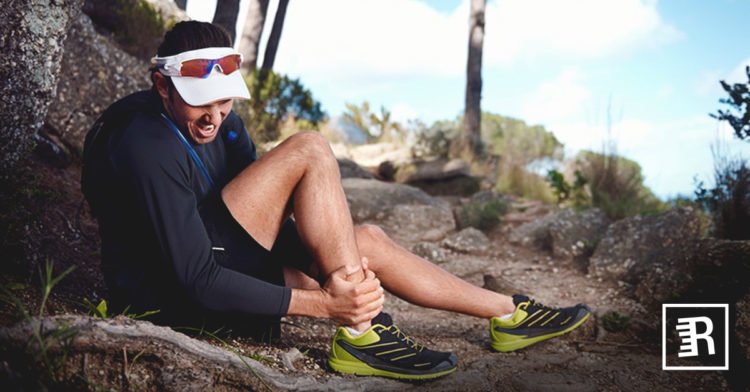Does pain in your shins keep you from an enjoyable run?
Shin splints may be a daily part of your routine for running, but it does not have to be. Take a moment to look behind the reason why shin splints happens, and how you can effectively recover for a pain free run. Shin splints symptoms are easy to detect but first, let's understand the cause.
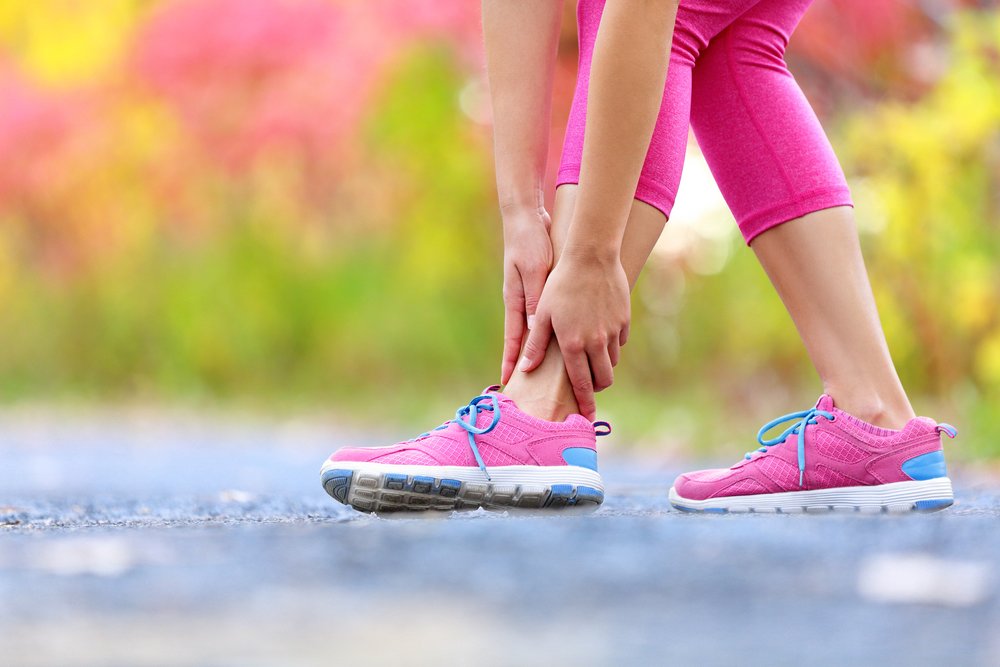
Behind the Cause
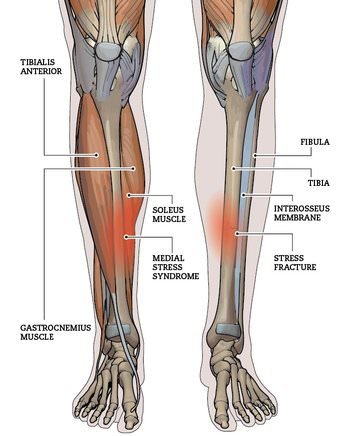
Shin splints is also known as Medial Tibial Stress Syndrome. As you pound your feet against the ground, your shins take on six times your weight, which creates a continual overuse injury.
Tendons and muscles are attached to the tibia bone, otherwise known as your shin bone. Tendons connect to a connective tissue called periosteum, which gets tugged around as your muscles contract. With your muscles being potentially too tight, and overworking your body, it can lead to the damage of the periosteum.
Inflammation occurs as your body tries to heal itself. As you continue your usual activity with the pain, it will only make matters worse and prevents you from healing quickly.
Your muscles have acute memory of past injury, which means if you have had shin splints before, you are more likely to have them again. Old injuries can leave scar tissue within your body that inhibits full healing and leaves you susceptible to more injury.
Stress Fractures
Beyond muscles contracting and causing inflammation, you may have a potential stress fracture if the pain continues to get worse. Stress fractures are tiny cracks within the tibia, or shin bone. With too much pressure against your bone through exertion, your bones cycle out weakened or damaged bone to create a new bone layer. As it rids your body of weakened bone, it may not be able to produce a new bone layer fast enough, which in turn creates tiny cracks within your tibia. If your pain continues to get worse, consult a physician or physical therapist to determine what your bone structure may be doing.
Habits That Form
Often shin splints can be formed by poor running habits. Bad form can cause shin splints as the angle of your body puts too much pressure on your shin bone. Pushing through the pain and not taking the time to rest further damages your shins and may hinder your training program in the long run.
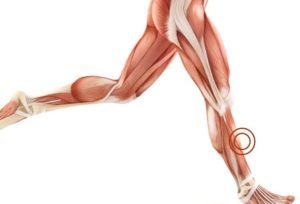
If you are breaking in a new pair of shoes or trying out a new aggressive training program, you may want to scale back your enthusiasm for the sake of your shins. Establish healthier habits to ensure optimal running health without the pain. By developing good habits in the beginning of a new routine, your body will be able to perform better in the long run.
Movement and Alignment
The way your body is positioned naturally may have you more prone to pain in your shin. Over pronation or flat feet increases your chances of shin splints. As your arches collapse when you press your foot against the ground, it creates more impact on your shin, which in the long run can increase damage. Weakness in the hips and knees leads to instability that also presses more weight against your shins as you move. By evaluating the way you move and how you align your body as you run, you have the opportunity to limit the possibility of shin splints occurring.
Possible Shin Splints Symptoms
Symptoms start out with a dull ache or sharp pain in your shin. Pain can occur both during and after exercising. If the spot on your shin is tender to the touch, it may be your body trying to heal itself from the damage, which causes inflammation. If you are unable to walk or run without pain, then it is time to get your shins looked at by a physician or physical therapist to determine the best course of action to help you run without pain.
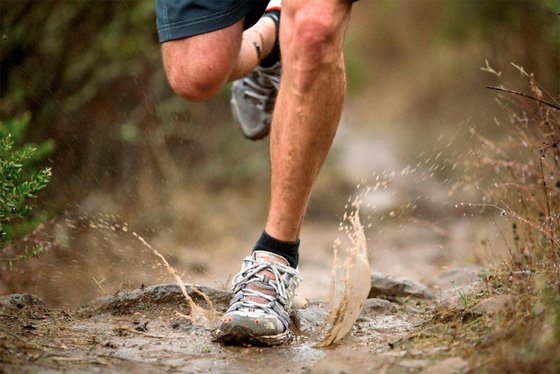
Small bumps or bruising around the shin or pain while standing for long periods of time are other symptoms that may cause alarm for the need to treat your shin splints.
If your symptoms persist, take a moment to pause and re-evaluate your training plan and consider your options for finding relief.
The earlier you are able to catch the symptoms of shin splints, the sooner you can find relief and keep the pain from getting worse.
Treatments
There are several ways to approach treating shin splints. If your shin pain is only minor, then resting may be your best cure. If your pain is more severe, you need to consult a specialist or physical therapist who can help you manage your pain levels and teach you to rebuild your muscles and tendons. First assess the source of your pain and what may be the underlying cause for your shin pain. As you discover the root of the pain, you will be able to move forward and heal faster.
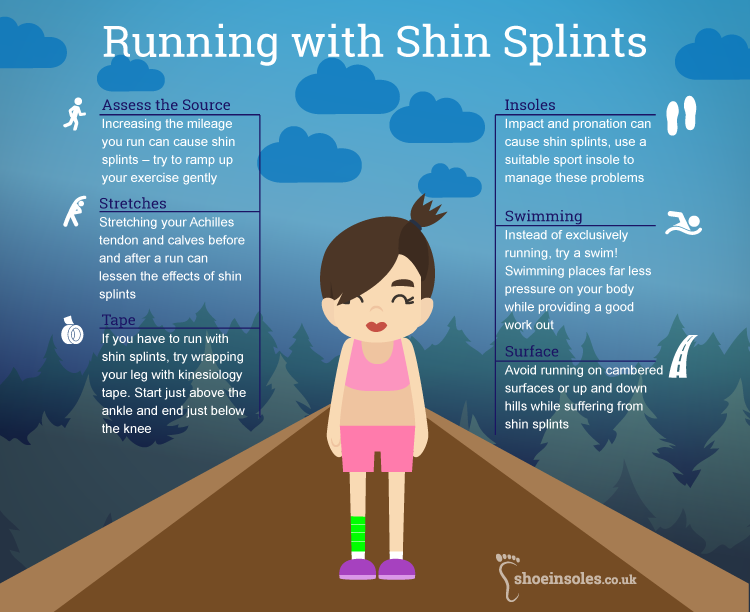
Rest
Rest is your first step in finding relief from the pain. Icing for twenty minutes at a time can decrease the inflammation occurring in your shin and provide relief. Allowing the time for your body to heal itself will give you the opportunity to heal faster, but be patient with yourself until your body has reached the healing point.
Rest may also include keeping the swelling down in your shins the best you can. Take anti-inflammatory medications, such as ibuprofen or naproxen. Alternative methods that are easier on your stomach include turmeric, or foods that are high in omega-3.
Rebuild Slowly
Start slowly rebuilding your strength once the pain subsides. Increase the intensity of working out again only by 10% each week. By giving the time to slowly rebuild your muscles and tendons, you will be able to be stronger than you were before.
Cross-Training and Strengthening
A key in avoiding future injury is to work on strengthening your core and hips to achieve better stability as you run. The more balanced your muscles are, the less impact that will go solely to your shin bones. Consider cross-training with lower impact activities. Swimming is a great way to keep your muscles moving, but without the impact of gravity.
Try different strengthening and stretching routines to give your body muscle balance. By keeping your body properly aligned with balanced strength, you can avoid getting repeatedly injured.
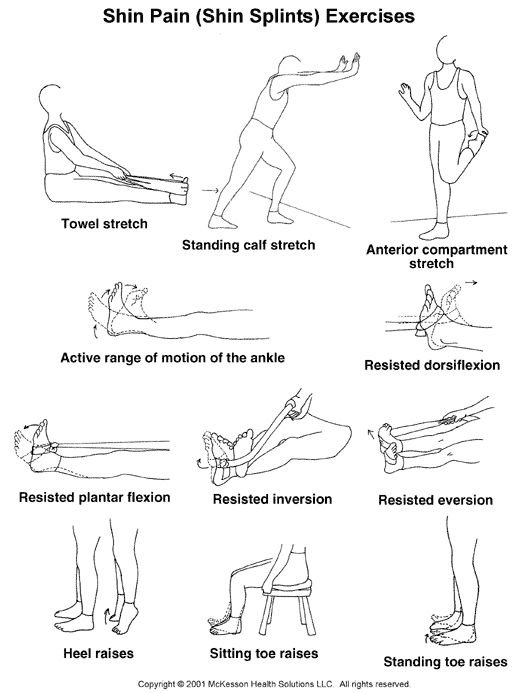
Taping
Taping can help ease the pain of shin splints by giving your muscles the support they need to heal faster. Click on KT Tape's video to learn how to tape your shin on your own.
Change Your Running Form
By shifting the way you run, you can improve your performance overall and limit the potential possibility of being injured. Run tall with a slight lean forward and your arms positioned at 90 degrees. Try to keep your chest upright and your head looking forward to where you are going. Strike your mid-foot against the ground with a higher cadence between 170-180 bpm (beats per minute). Keep your body calm and balanced to achieve running without further injury.
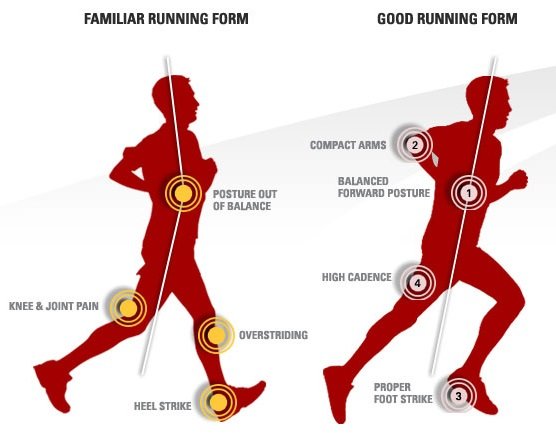
The Right Pair Of Shoes
Your running shoes make a difference in the impact towards your shins. Run down shoes can cause damaging impact and hinder balance as you run. Be aware of when it is time for a new pair of shoes.
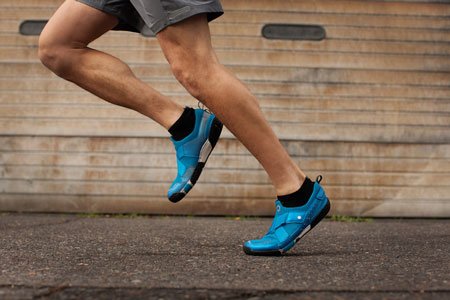
The suggested mileage for a running shoe is around 300 miles, but many runners wear theirs up to 2,000 miles. The more you run and try out different shoes, the more you will be aware of when it is time for a new pair.
Not only should you be cycling your running shoes, but you should be wearing the right pair. Visit your local running store to find the perfect fit for your feet that compliment your running style. The more supported your body is, the faster and more efficiently you will be able to run without pain.
Orthotics
Orthotics provide more stability as you run by absorbing the shock of your feet pressing into the ground. With the option to get orthotics that are specific to your running style, you will be well cushioned and balanced to build stronger muscles around your shins.
Compression Sleeves
Compression sleeves can help and even prevent shin splints from happening. By increasing blood circulation, it gives your body the movement and blood flow it needs to keep up your running stamina. With a unique support to your body's system, compression sleeves decrease the amount of time you will spend recovering from shin splints, so you can spend more time running.
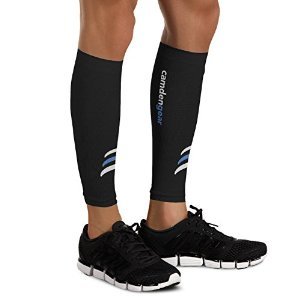
Physical Therapy
If you have a continual cycle of shin splints, reach out to a physical therapist that may be able to advise a method to bring relief. Massage therapy is also a method to get your circulation moving to help your shins from further potential damage.
Listen To Your Body
When you listen to your body, you give space for it to recoup and build itself up stronger. Once the pain subsides, try different strengthening routines to give your muscles better balance. Listen to when your body is in pain and take the time to rest. If your training program is too intense for your body, be flexible in changing your routine to allow for recovery time. The best thing you can do for yourself as a runner is to listen to the movement of your body and adjust accordingly. Run without pain by allowing for rest, strengthening exercises, and giving your shins the support they need to help you run your best every single day.

